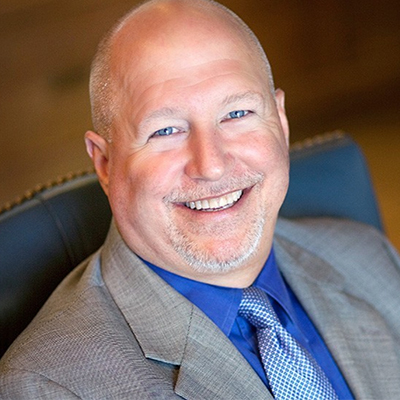Are you a practicing lawyer who is transitioning into a leadership role? Whether it’s as a managing partner, practice group leader, office managing partner, or executive committee member—in all cases, to be effective as a leader, you need to make a significant shift in your mindset in several ways.
First, many lawyer-leaders default to the role of “manager”—making sure that important things get done in a regular and predictable way (timesheets are turned in, mentoring younger lawyers takes place, work is assigned rationally, etc.). There is certainly a need for management, but today the greater need in law firms is for leadership, i.e., determining what direction your constituents should go in, and then encouraging them to voluntarily go there. So in addition to thinking like a manager, you also have to think like a leader.
Leadership is a natural response to change. When making decisions, leaders, by definition, never have all the information they’d like to have. Thus they depend on establishing credibility and a trust relationship with their constituents. This, in turn, requires a large dose of emotional intelligence and other relationship?building skills. These are learnable skills, and lawyer-leaders need to increase their competence in these areas.
The second and more important mindset shift that you need to make is an extension of the first. You need to shift your mindset about how best to influence people.
________________
"Leadership is a natural response to change. When making decisions, leaders, by definition, never have all the information they’d like to have. Thus they depend on establishing credibility and a trust relationship with their constituents. This, in turn, requires a large dose of emotional intelligence and other relationship-building skills."
________________
In your role as “lawyer”, you have been trained to influence others using an “advocacy” model, rather than a “behavioral influence” model. In the advocacy model, we influence by marshaling a series of persuasive syllogisms with which we regale the object of our influence in the hope that the force of logic will persuade them to our point of view. In a litigation, this is a winning strategy—but mainly because there is a neutral third party present to adjudicate the issue between adversaries. If you try the same technique with one of your partners, you may have noticed that the typical response is not capitulation.
Instead, the other person will dig in their heels, harden their previous position, and marshal their own best arguments about why you’re wrong and why their view should prevail. Advocacy as an influencing tool is utterly ineffective and inadvisable as a leadership strategy when your mission is to effectively lead other lawyers.
What does work? A “behavioral influence” approach. Over the past 30 years, considerable attention has been paid by psychologists to the methods used by highly effective influencers in society—advertisers, fundraisers, public relations experts, lobbyists, and business leaders. The methods of these “natural persuaders” have been analyzed and codified, and it turns out that all of them rely on just a few simple strategies that are very effective in getting large groups of people to do what the influencer seeks.
Law firm leaders need to understand these natural pillars of influence. They include role modeling, social proof, commitment and consistency, and similarity.
Role Modeling
We are all wired to pay more attention to leaders and other authorities than to our peers. In particular, we pay far more attention to what leaders do than to what they say. So the first rule of influence is that a leader must “walk the talk.” You can’t ask others to turn in their timesheets on time when you don’t turn your own in on time. This is a far more powerful principle than the timesheet example might lead you to conclude. If you are asking people to try behaving in a new way, it is imperative that you take the lead in doing the new behavior yourself. It also helps to enlist other highly respected and visible firm leaders as well—there’s strength in numbers.
Social Proof
Also known as “the bandwagon effect”, this is more or less a first cousin to the role modeling principle. If role modeling tells us that rank and file lawyers will look up to leaders, social proof tells us that they also look to their peers to obtain guidance about what the proper behavior should be. This is especially true during times of great change such as we’re going through now—the ambiguity that results from a rapidly changing environment increases people’s need to look around and see how others are behaving.
The lesson here is to enlist thought leaders—lawyers that others look up to but who are considered peers of the other partners—and one by one, make a personal plea to each of them to adopt the desired new behavior. A small number of thought leaders adopting a new behavior is a powerful inducement to all the other partners to adopt those behaviors too.
Commitment and Consistency
Human beings like being consistent. We don’t like the tension that exists when we believe we are one kind of person and then we behave as if we’re another kind of person. When that kind of discrepancy occurs, there is great psychological pressure to bring belief and behavior into alignment. In some cases, changing one’s behavior is the easier path; in others, changing one’s belief is the easier way.
The main point is that if you can get your partners to try a small version of a larger behavior…that “toe in the water” often makes it much easier for people to move on and adopt the full?blown behavior that you’re hoping they’ll adopt. So start small. Begin with little steps, and build from there.
Similarity
The last principle is based on the idea that we are much more likely to allow ourselves to be influenced when we believe that the person asking us to change is just like us. So before you make a request of your partners to do something new or different, you first should consider showing them how others just like them have already done so. This principle dovetails nicely with the “social proof” principle—although they are technically two separate and distinct psychological patterns, they work very well together, and often overlap.
If you begin using these behavioral influence methods instead of relying on logic alone, your ability to lead other lawyers will grow commensurately.
# # #
About the Author

Dr. Larry Richard is the founder and principal consultant at LawyerBrain LLC, a consultancy specializing in improving the practice of law using personality science. Dr. Richard practiced law for 10 years before earning a Ph.D. in organizational psychology. For the past 20-plus years, he has helped the leaders of AmLaw 100 firms improve leadership, manage change, build collaboration and employee engagement, and select and develop talent. He can be reached at drlarryrichard@lawyerbrain.com


















